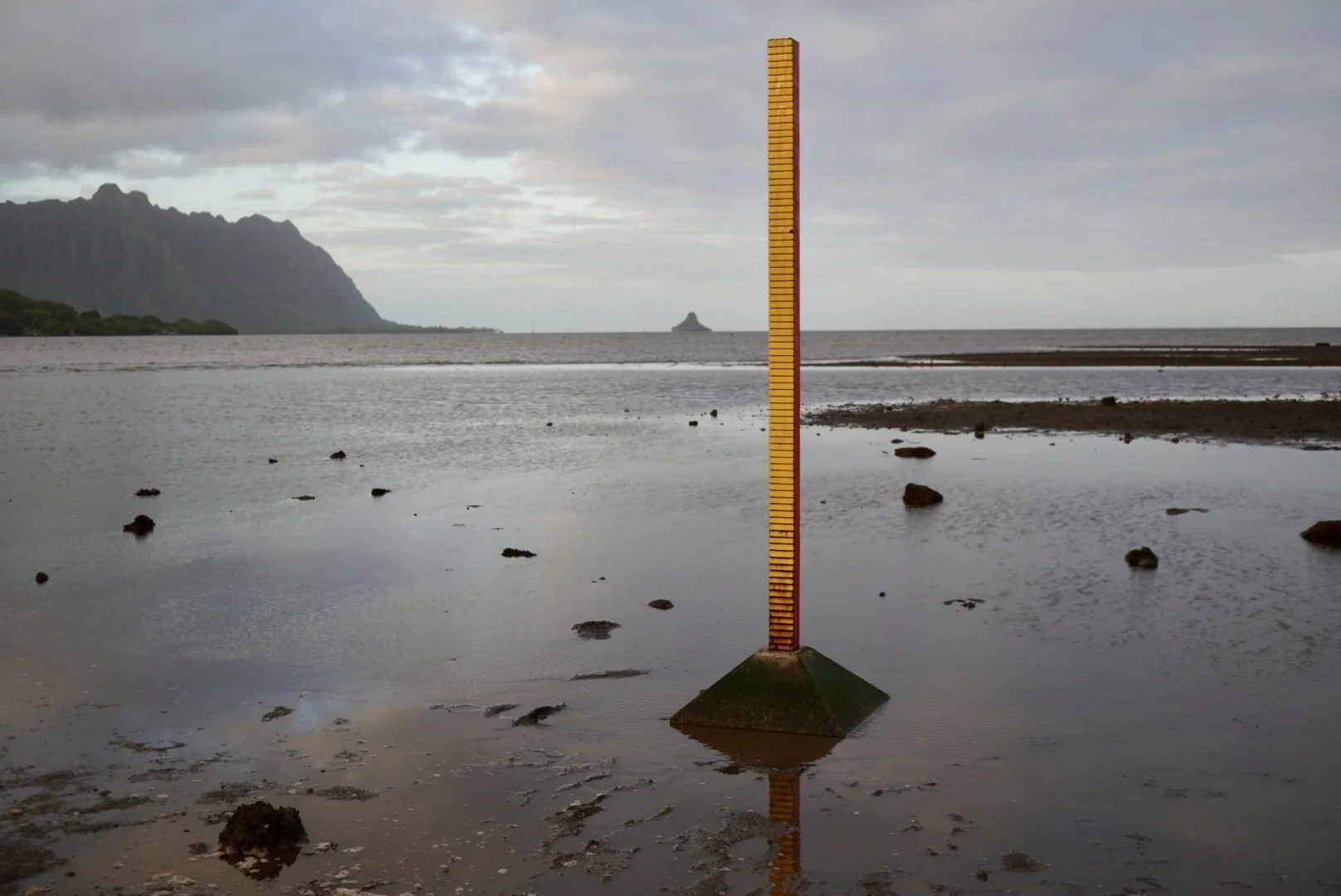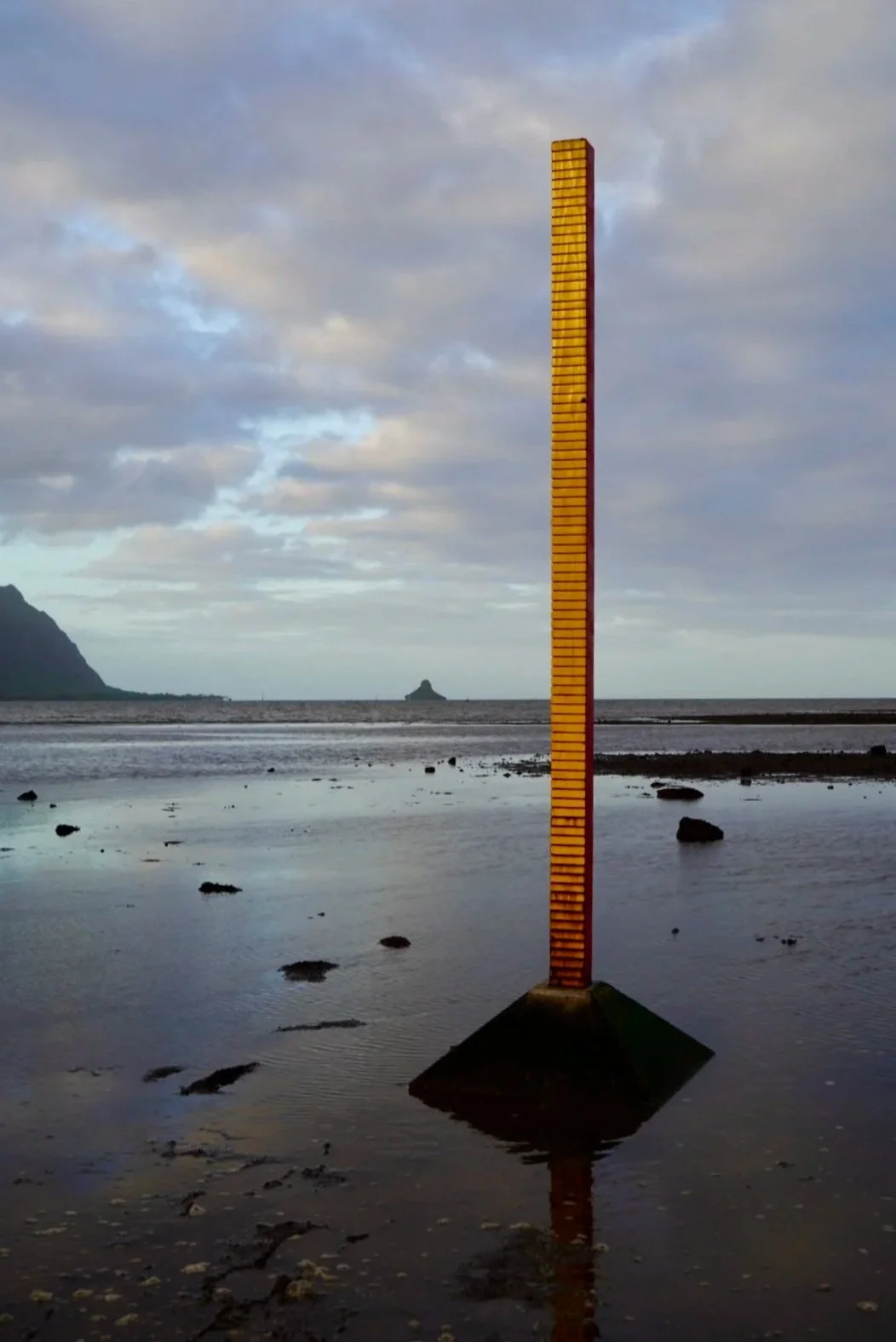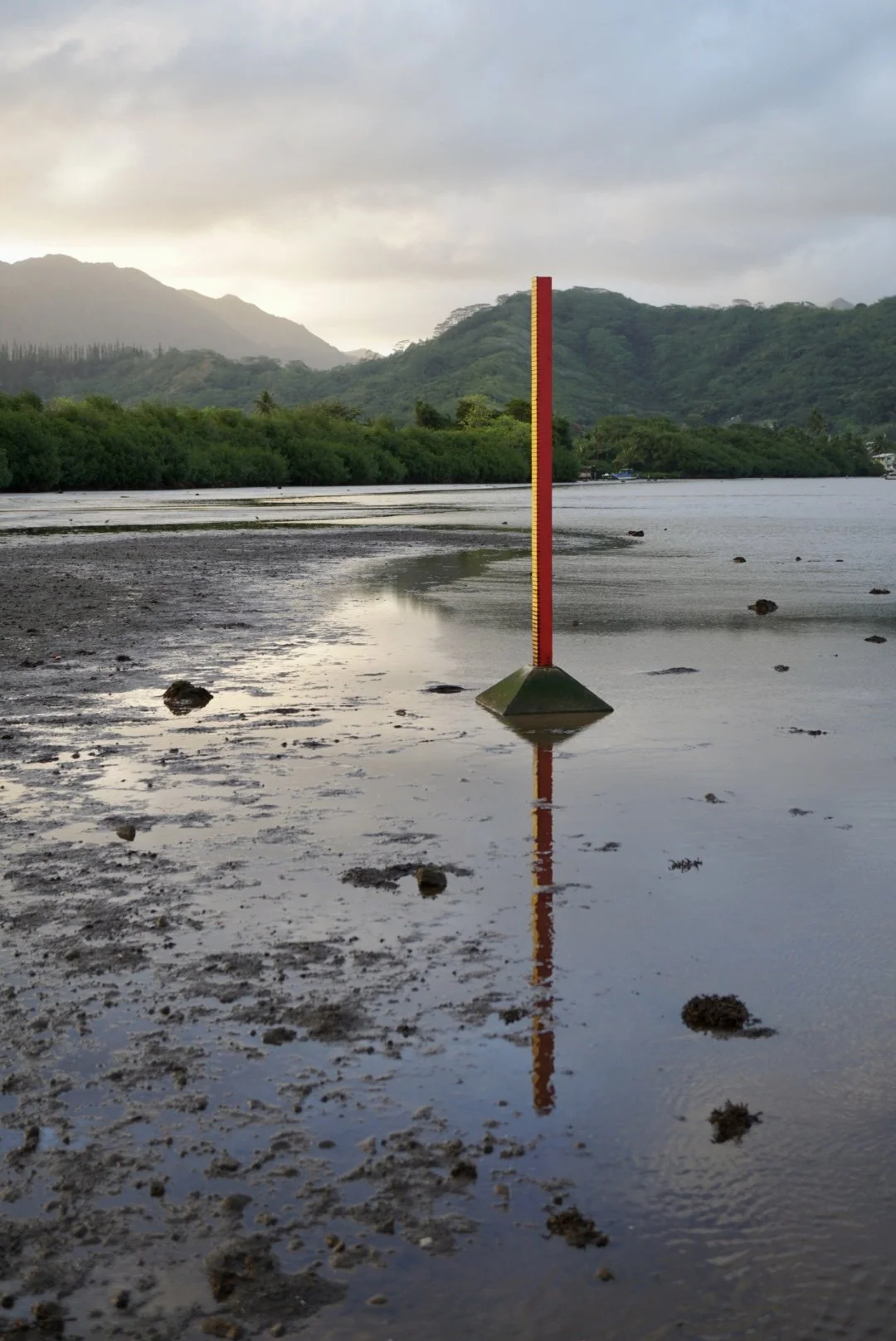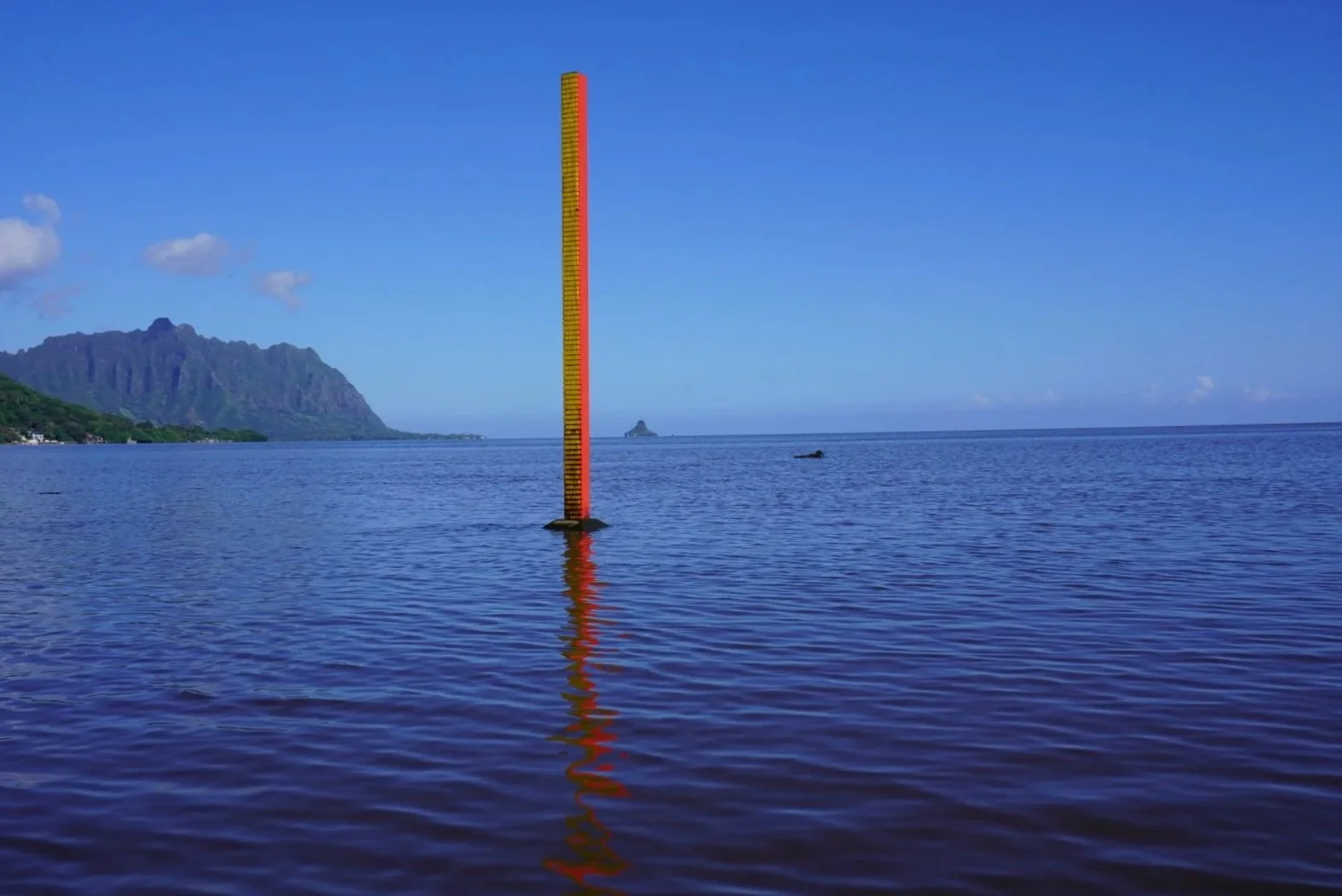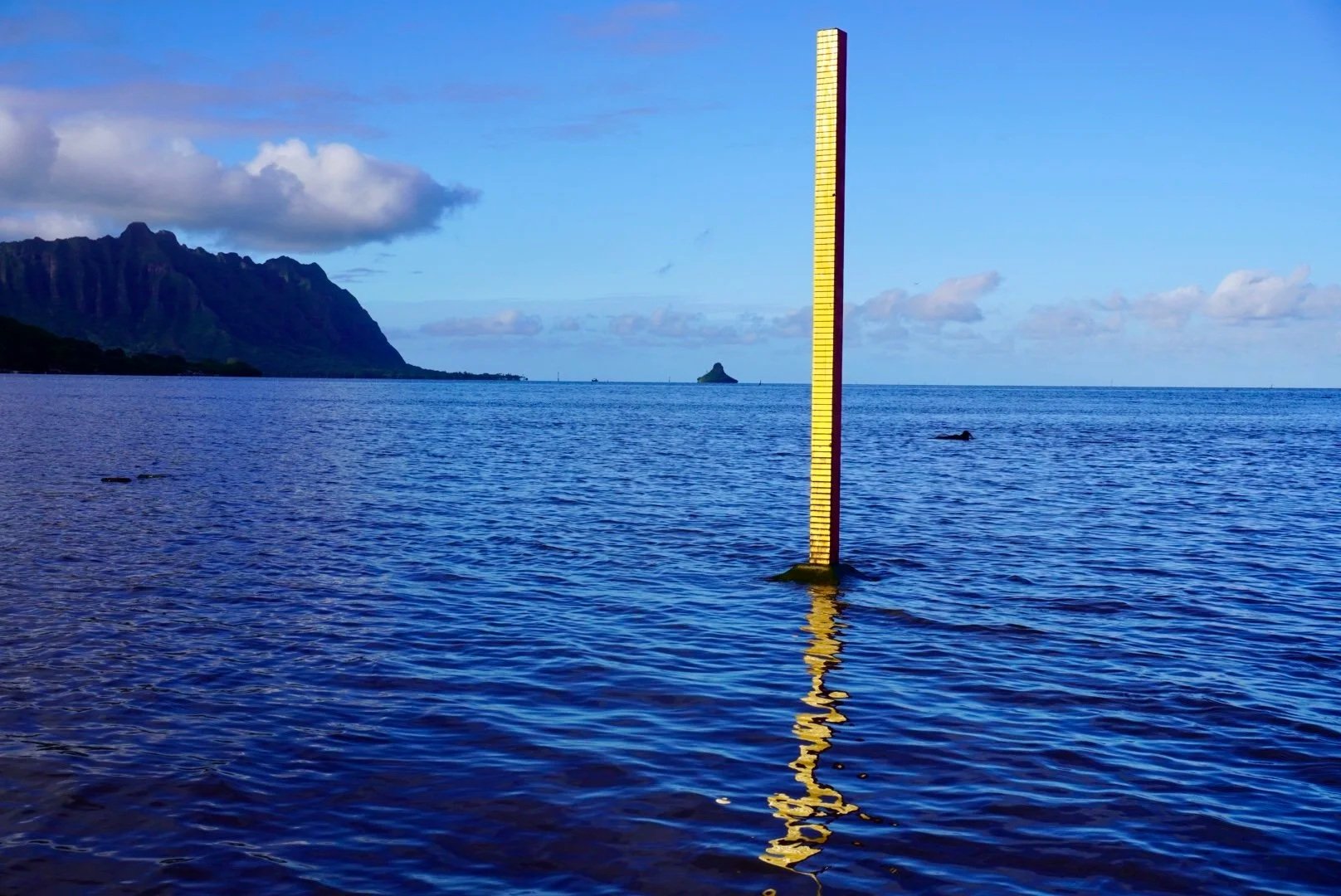Tidal Stick #2, 2022
Cedar wood, cement cast, paint 13’ x 3.5’ x 3.5’
The ocean tides highlight how the world is in a constant state of transformation. Tides sculpt the earth, dictating the way coastal inhabitants live. The tides rise and fall each day; they can be temperamental, soothing, calm, and destructive. They nurture life and also take it. They are reliable and consistent, transforming our landscapes with salt and movement, leaving their marks behind on our coastal ecosystems.
Interacting with these natural processes, this site-specific installation is a tool to create a dialogue and conversation with the tides and natural elements within Kāneʻohe Bay. It was installed in an intertidal zone on the windward coast that is currently undergoing various effects due to climate change, sea-level rise, and artificial structures encroaching on oceanfront habitats. Images of Hawaiʻi’s coastlines are recorded periodically through topographical photos to help scientists study the changes over time. Areas like Kualoa Regional Park have experienced significant coastal variations including a shoreline retreat of over four hundred feet since 1928.
As the water rises and retreats each day, the tidal sculpture highlights the natural processes of the ocean tides. As the saltwater falls, it reveals the marks on the sculpture that transform over time. Made of cement, a material often found infringing on coastlines and intertidal zones, the sculpture’s base engages with the tides. With its textured exterior, it provides a stable refuge for algae and crustaceans. The tidal installation pushes us to think about the constant changes in our environment. Tides, sea-level rise, and coastal erosion are reminders that life is in a continual state of motion and transformation.
Special thanks to Kammie-Dominique Tavares, Marcie Grabowski and Coastal Geology Group.
